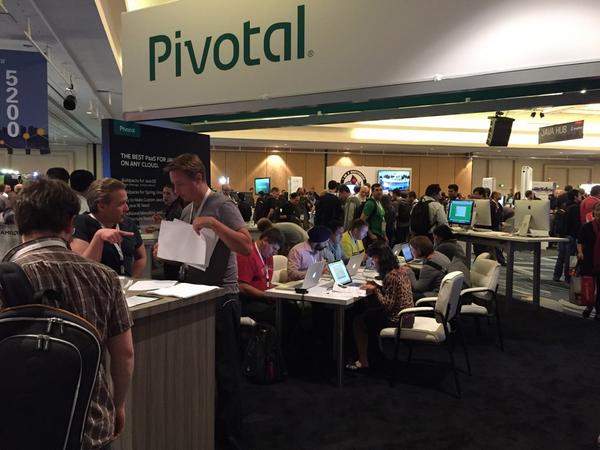Are you heading to JavaOne 2014? If you are, we invite all of the Java community members to stop by the Pivotal Booth (Booth Number 5201) and talk to Pivotal engineers about the latest innovations in Java SE, in Spring, Groovy, Grails, Redis, RabbitMQ, Tomcat, Cloud Foundry and Hadoop. The exhibit space is open Monday, Tuesday from 9:30am – 5:30pm, and Wednesday from 9:30am to 4:30pm, so there should be plenty of time to get your questions answered. See below for a map and booth details about our giveaways - come find us! Lots of great stuff at the booth.
Pivotal technologists are also presenting a lot of sessions as well so be sure to add the following talks to your session builder and reserve a seat:
Josh Long — Spring advocate at Pivotal
Cornelia Davis — Platform Engineer at Pivotal
John Field — Solutions Architect at Pivotal
Guillaume Laforge — Groovy project manager at Pivotal
Martin Lippert - Principal Software Engineer at Pivotal
Oliver Gierke - Spring Data Project Lead at Pivotal
Cédric Champeau — Senior software engineer in the Groovy team at Pivotal
Interesting non-Pivotal Sessions
Groovy and Grails Puzzlers: As Usual—Traps, Pitfalls, and End Cases[CON1764]
Microservices on the JVM: A Practical Overview [CON4952]
Use Java, the Spring Framework, and Oracle Tuxedo to Extend Existing C/C++/COBOL Apps[HOL9447]
Visit us at the booth for technical expert conversations on Cloud Foundry, Spring, Groovy, Grails, Redis, RabbitMQ, Tomcat, Hadoop and much more. We'll have great demos in the booth about:

